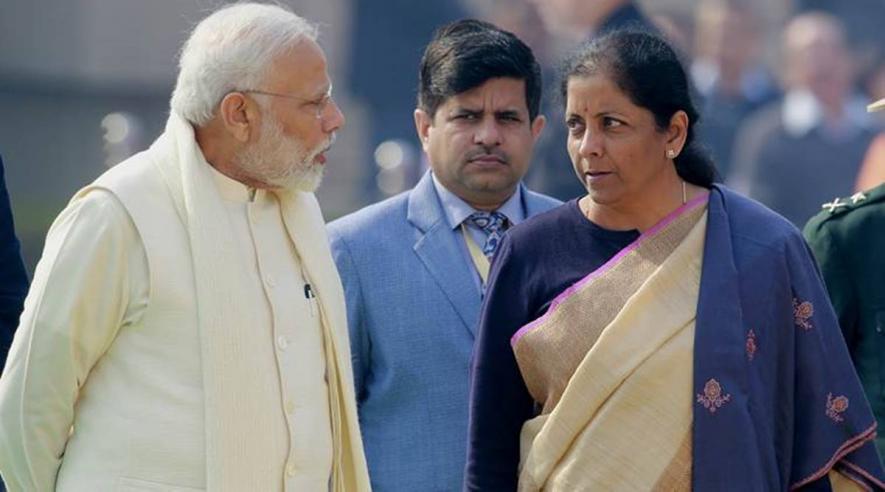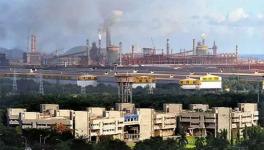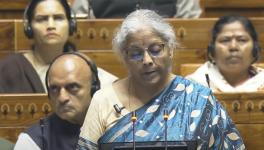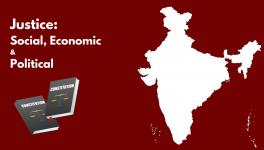How Much is Govt Really Spending on ‘Economic Package’

Representational image. | Image Courtesy: The Indian Express
New Delhi: The “second tranche” of announcements on the economic “package” for migrants and urban poor to build an “Atma Nirbhar Bharat”, made by Finance Minister Nirmala Sitharaman on May 14, is once again more of the same.
Let’s look at the measures announced:
-
Free foodgrain supply to migrants for two months.
-
Technology system to be used enabling migrants to access PDS (Ration) from any fair price shop in India by March 2021 aiming for ‘One Nation one Ration Card’
-
Scheme for affordable rental housing complexes for migrant Workers and urban poor to be launched
-
2% interest subvention for 12 months for Shishu MUDRA loanees- Relief of Rs. 1,500 crore
-
Rs 5,000 crore credit facility for street vendors.
-
Rs 70,000 crore boost to housing sector and middle income group through extension of Credit Linked Subsidy Scheme under PMAY (Urban)
-
Rs 6,000 crore for creating employment using CAMPA funds
-
Rs 30,000 crore additional emergency working capital for farmers through NABARD
-
Rs 2 lakh crore concessional credit boost to 2.5 crore farmers under Kisan Credit Card Scheme
Now, let us check the details of these measure and how much money the government is spending on this from the Rs 20 lakh crore “economic package” announced by Prime Minister Narendra Modi.
Read Also: Loan Guarantees Not Economic Stimulus
Free Foodgrain Supply for 2 Months
The government said 5 of kg foodgrains per migrant labourer and 1 kg chana for their families in May and June will be supplied free of cost.
As per the government’s foodgrain stocking norms, for the April to June quarter, India should have 210.4 lakh tonnes (115.80 LT rice and 44.60 LT wheat in operational stock, and 20 LT rice, 30 LT wheat in the strategic reserve).
According to the data published by Department of Food & Public Distribution, Ministry of Food & Public Distribution, as on May 6, the Food Corporation of India (FCI) had 234.64 LT rice and 92.11 LT wheat in stock. Various state agencies had 50.39 LT rice and 265.59 LT wheat stocks. Put together, the country has stocks of 285.03 LT rice and 357.70 LT wheat (total 642.73 LT) in the central pool. Beyond this, 234.29 LT unmilled paddy is in stock with FCI and various state agencies.
If the government data is accurate, at present, the FCI has additional 118.84 lakh tonne of rice stock and 47.51 LT wheat. This shows that as of now, the country has 116.35 lakh tonne foodgrains in the buffer stock.
The Annavitran portal of food department shows total Central foodgrain allocation under the Pradhan Mantri Garib Kalyan Yojana (PMGKY) for April, May and June at 102.4 LT.
So, how fair is the food distribution to the poor?
In a recent study, economists Jean Dreze and Reetika Khera estimated that more than 100 million people are excluded from the public distribution system or PDS because the Centre’s PDS allocation to states are calculated on the basis of Census 2011. The introduction of biometric-based ration distribution has made the situation worse for the poor.
The National Food Security Act or NFSA website shows there are 80.54 crore beneficiaries under the Act. But, data released by the Centre on May 5, 2020, shows, only 60.33 crore beneficiaries under the PMGKY scheme in April, leaving out 20 crore people.
Considering these factors, how adequate are these allocations and how they reach all the deserving people remains to be seen.
Affordable Rental Housing Complexes
Under Pradhan Matri Awas Yojna (Urban), government-funded housing in cities will be converted into Affordable Rental Housing Complexes (ARHCs). This scheme will be implemented by a public-private partnership (PPP) model, worked out through concessionaires. State and Central government agencies, private institutions, manufacturing units, industries and associations will be incentivised to develop and operate ARHCs on their land. Guidelines are yet to be announced for this long-term project.
But, will this really benefit migrant workers? Here’s what government figures speak.
When PMAY (U) was launched on June 15, 2015, it subsumed the numbers from existing schemes, such as Rajiv Gandhi Awas Yojana (RAY), Rajiv Rinn Yojanaa (RRY) etc. PMAY(U) has a sub-component called In-Situ Slum Redevelopment (ISSR), meant for the urban poor. Government data shows that five years after the scheme’s launch after subsuming the numbers of the then existing schemes, only 4.62 lakh houses were completed in the entire country under PMAY (Urban) till April 20, this year.
Considering these statistics, it is difficult to believe that this measure will provide any relief to migrant workers. Also, counting this in the Rs 20 lakh crore ‘economic package’ to revive the economy sounds farfetched, as the government doesn’t need to spend anything on this in the near future.
One Nation, One Ration Card
Once again, there is nothing new in this announcement. The pilot scheme on this has been running since months. The aim was to ensure that the scheme covered the entire country by June this year. Now that deadline has been extended to March 2021, how can an existing scheme, with no or minimal investment from the government, become a part of an ‘economic package’ to revive the economy?
2% Interest Subvention for 12 Months
The Mudra Shishu scheme enables loans up to Rs.50,000. Public sector State Bank of India (SBI) charges a minimum of 10.15% interest on this loan. The Mudra annual report 2018-19 says slightly over 86% loans disbursed under the Mudra scheme fall under the Shishu category, and the average loan size under the Shishu category is Rs. 27,640.
The composition of loanees is as follows: 48% of people who availed the loan are from weaker sections (Scheduled Castes, Tribes and Other Backward Classes) and 10% is from the minority communities. The share of women in the Shishu category is at 65% in terms of the number of accounts and 68% in total. Most of the loanees are from poor or economically backward sections.
Now, here’s the catch. In the “economic package”, the government has announced interest subvention of 2% for 12 months for “prompt payees”, which, in effect, means that the interest subvention scheme will be applicable to only those who are paying their installments regularly.
This implies that the government is virtually asking the poor to pay back the loans as soon as possible to banks at a time when they are uprooted and are facing livelihood uncertainties. Had the government given moratorium on interest for 12 months and was willing to pay a part of it to banks on behalf of loanees, this would have been considered a part of an “economic package”. Not otherwise.
Rs 5,000 Crore Credit Facility for Street Vendors
Street vendors are the worst hit by the countrywide lockdown, something that the government itself acknowledges. But, this again is a credit scheme (yet to be launched). Under the scheme, banks will provide loans up to Rs.10,000 to street vendors. The government expects 50 lakh vendors to avail this facility. Hence, it has been estimated that Rs.5,000 crore will go to vendors.
But, where is the government’s contribution in this? And ow can it be considered part of a special “economic package”?
Rs 70,000 Crore Under PMAY (Urban)
This, too, seems an extension of an existing scheme being passed off as part of the “economic package.”
If a dwelling unit’s carpet area is between 160 to 200 sq mtr, that unit is considered an MIG (middle income group) under PMAY(U). The Credit Linked Subsidy scheme (CLSS) for MIG (having income between Rs 6 to 18 lakh per annum) was introduced in PMAY(U) in January 2017.
According to the CLSS portal, anyone who avails a home loan of Rs.12 lakh under the scheme for a tenure of 20 years, will save Rs.230,156 in the entire period. (around Rs.2,200 per month. Interest rate is calculated at 10% per annum)
The scheme portal suggests that since its inception, the CLSS has provided approximately Rs.7,000 crore benefits to 3.3 lakh home buyers and mobilised Rs. 75,000 crore in investment. By extending the scheme, the government expects 2.5 lakh families to invest in new homes in 2020-21, mobilising Rs.70,000 crore in the same period for the real estate sector, which will have a cascading effect on related industries, like cement, steel, glass, goods transport etc.
There are two things to be noted here. (a) From January 2017 to April 2020, only 3.3 lakh houses were booked and Rs.75,000 crore investment was mobilised. So, the Narendra Modi government is presuming that in the remaining 10 months of 2020-21, as many as 2.5 lakh houses will be booked and Rs.70,000 crore investment will be mobilised, especially when jobs are lost and market uncertainties are worrying the middle class?
(b) Where is the immediate government investment in this case? If the government’s dream of 2.5 lakh people booking new homes in the next 10 months under the scheme comes true, it will have to pay the subvention over a long period – by 2040-41. By the way, in the 2020-21 budget, government had allocated only Rs.500 crore for this scheme.
The Reserve Bank of India or RBI has noted that on an average, 39% of a home buyer’s income goes towards paying EMIs (equated monthly installments) of home loans. This burden is sure to pinch the lower and middle income groups, especially when the market conditions are volatile.
And, in the current situation (lockdown and a stalled economy), there are more chances of missing or defaulting EMIs. Though banks have deferred the EMIs till May 31, that will burden the customers heavily. SBI, in its Covid-19 relief measure notification says: the Impact in case of deferment of home loan, If the loan amount is Rs.30 lakh and tenure is 15 years, will be 2.34 lakh, which is equal to 8 EMIs.”
This will wipe out most of the benefit of the interest subvention scheme. In fact, the scheme would have been considered an “economic package” if the government said it was ready to waive the interest for these three months.
In the present scenario, the government presented an extension of an existing scheme with an allocated budget of Rs. 500 crore as a part of economic package worth Rs.70,000 crore, without having to spend anything immediately.
How can this be considered as a measure to stimulate the economy or part of the Rs 20 lakh crore economic package?
Creating Jobs Using CAMPA Funds
The Compensatory Afforestation Fund Act, 2016 came into effect on September 30, 2018. It created a National Compensatory Afforestation Fund (NCAF) under the Public Account of the government of the India and State Compensatory Afforestation Fund (SCAF) under the Public Account of each state, under the regulation of state and national CAMPA. Compensatory afforestation funds are deposited into this account, which are divided between the state concerned and the Centre at 90:10 ratio.
According to Ministry of Environment, Forest and Climate Change, Rs.54,685 Crore from ad-hoc CAMPA has been brought under the control of the Government of India and Rs.47,000 crore has been released to various states.
In 2013, a CAG report pointed out that CAMPA funds were underutilised. Some reports mentioned that most of the CAMPA funds are parked in government securities and it was worth approximately Rs.50,000 crore. In April this year, it was reported that many cash-strapped state governments asked the Centre to release the CAMPA funds or provide soft loans from the fund.
Sitharaman’s announcement says that Rs. 6,000 crore from this fund will be utilised for artificial regeneration, assisted natural regeneration, forest management, soil & moisture conservation works, forest protection, forest and wildlife related infrastructure development, wildlife protection and management etc, and it will provide employment opportunities, especially in tribal areas.
Whether the Centre will oversee the implementation or the funds will be transferred to states is not clear. If it is transferred to states, how these funds are utilised remains to be seen.
Working Capital for Farmers Through NABARD
Under this scheme, NABARD will provide Rs. 30,000 crore to 33 state cooperative banks, 351 district cooperative banks and 43 Regional Rural Banks (RRB), which will lend money to small and marginal farmers. This is, therefore, another loan scheme and there is no direct monetary contribution from the Centre in this. Hence, it cannot be called a part of the economic or stimulus package of the government.
Kisan Credit Card Scheme
This is yet another loan scheme for farmers. Here too, banks /financial institutions will provide loans to farmers at a lower rate of interest. Monetary contribution from the government, like in almost all the other measures announced under the economic package, is zilch.
In two days, the finance minister has announced measures worth almost Rs 9 lakh crore. But, interestingly, the government is not spending any money in any of these measures. It is amazing to know that a government can announce loans provided by banks or government providing guarantee to the loans as an economic package to stimulate the economy.
The writer is a freelance journalist.
Get the latest reports & analysis with people's perspective on Protests, movements & deep analytical videos, discussions of the current affairs in your Telegram app. Subscribe to NewsClick's Telegram channel & get Real-Time updates on stories, as they get published on our website.
























